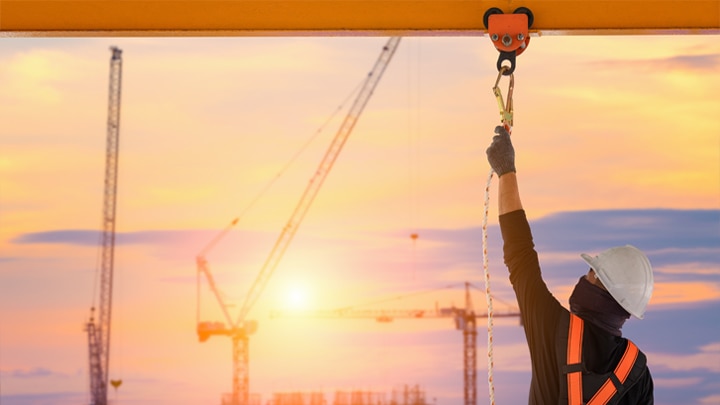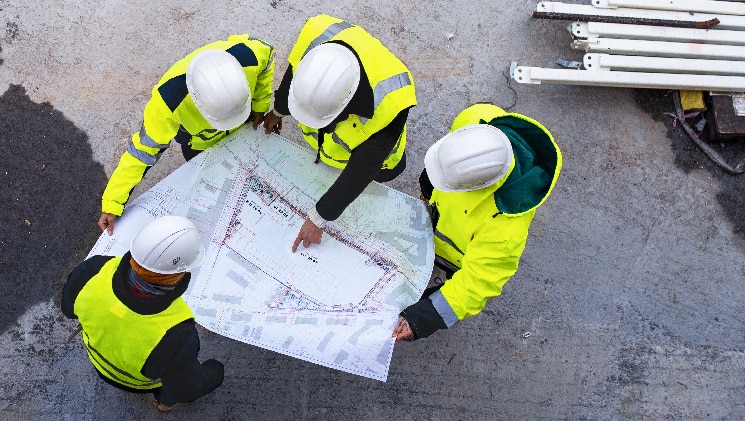
On a construction site, workers face a variety of safety risks – like falling from heights, being struck by heavy equipment, and getting hit by falling objects. These risks are also driving factors for why the construction industry has the greatest number of traumatic brain injuries (TBIs) among U.S. workplaces, according to research by the National Institute for Occupational Safety and Health (NIOSH). Learn more about the threat of TBIs and ways to better protect employees and help your organization reduce the risk.
The construction industry and TBIs
For construction workers, falls are the leading cause of TBIs, and the prevalence and impact of the problem are considerable:
- NIOSH estimates that more than 200 construction workers are killed and more than 10,000 are seriously injured by falls each year.
- Construction is the only industry where falls to a lower level is the leading cause of disabling workplace related injuries — costing $2.5 billion — according to the 2020 Liberty Mutual Workplace Safety Index construction-specific report.
- According the same report, falls — whether to a lower level or the same level — are the top cost driver for the construction industry, amounting to almost 40 percent of total costs.
More than 200 construction workers are killed and more than 10,000 are seriously injured by falls each year.
The cost of TBIs in the construction sector
In the construction industry, falls from heights and traumatic brain injuries are leading drivers of loss. Growing awareness of TBIs and the subjectivity of symptoms are also helping to drive the frequency and severity of related claims.
In cases of catastrophic TBI claims, life-care plans that project potential future needs and costs are common. Yet experts say that calls for such higher levels of care are also happening more frequently in less complex TBI cases, driving liability costs up in terms of increased litigation expenses and settlement amounts.
Having a plan to mitigate the risk of TBIs
Establishing a comprehensive fall protection plan is a critical step that can encourage everyone to work safely and use the right safety equipment while working at heights, such as on roofs, ladders, and scaffolds. Getting the importance of the safety message across and staying on top of the newest safety equipment improvements are also important to help reduce the risk of falls and related injuries.
Consider these key areas as you develop your plan:
- Outreach, training, and policy guidance
The construction-falls-prevention campaign and annual Safety Stand-Down, started by NIOSH, OSHA, and the Center for Construction Research and Training (CPWR) is a great place to get information on staying safe. This campaign gathers and updates resources about planning, training, and executing the latest fall prevention measures. For example, a free NIOSH smartphone app provides visual and audio signals and safety tips for safe ladder positioning. More information can be found at the CPWR and NIOSH websites.
- Regular safety intervention reviews
Pay attention to improvements in the equipment you use and invest in to help protect employees on the jobsite. For example, traditional hard hats are being replaced with construction safety helmets that won’t tumble off during a fall, along with having higher levels of interior suspension, honeycomb structures, cushion, integrated chin straps, and side-impact protection. And harness support sizing is being vastly improved to help protect workers from falls due to poor fit.
Traditional hard hats are being replaced with construction safety helmets that won’t tumble off during a fall.
Creating a culture of safety
Reducing the risk of TBIs on the job site is not a one-and-done effort; it involves addressing multiple areas over the long-term. Perhaps most importantly, organizational leaders should work to create a culture of prevention and safety, where all employees understand the seriousness of staying safe and not cutting corners. Learn more about how construction companies are using technology to help protect workers and improve productivity.
Related insights
This website is general in nature, and is provided as a courtesy to you. Information is accurate to the best of Liberty Mutual’s knowledge, but companies and individuals should not rely on it to prevent and mitigate all risks as an explanation of coverage or benefits under an insurance policy. Consult your professional advisor regarding your particular facts and circumstance. By citing external authorities or linking to other websites, Liberty Mutual is not endorsing them.



